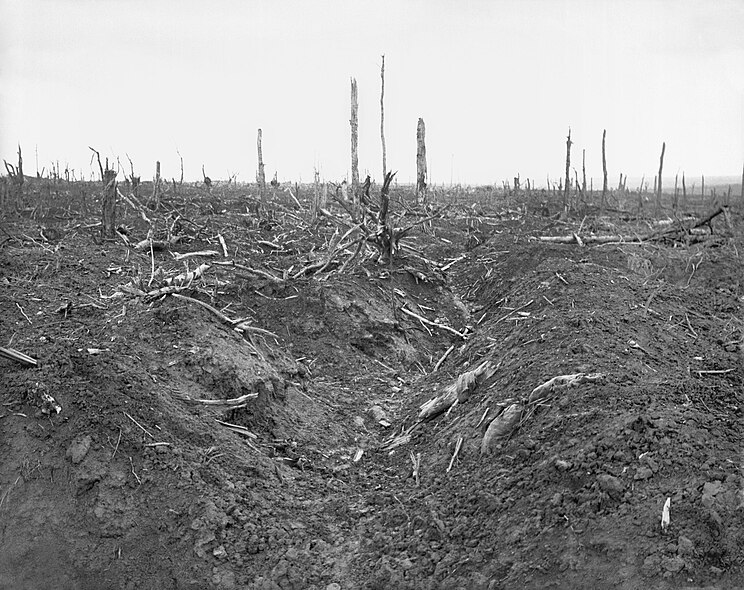The quaint French countryside is interrupted in a few places by memorials to a bloody history.
In an arc that stretches from Lille in the north to Verdun in the southeast is the "Zone Rouge" or red zone - a area that was utterly devastated during the trench warfare of World War I. Tens of millions of artillery shells fell over a narrow corridor as the war settled into stalemate and the great powers fought for gains measured in yards.
Passing through Verdun is an eerie experience. Verdun is one of the more famous of the battle sites, notorious for its pointlessness and horror. The numbers are staggering and speak for themselves, over 300,000 people were killed over the 10 months of the battle - 1,000 people a day on average. Many more were wounded. More soldiers died during one month of Verdun than during the entire Vietnam war. The result of the battle amounted to a stalemate - neither side could truly claim victory.
The landscape of the battlefield is permanently disfigured by the 40 million artillery shells fired during battle. Today, it has an eerie, sculpted beauty to it. It looks like a forgotten golf course, which has been reclaimed by the forest around it, and it stretches for miles and miles. The Zone Rouge, as well as the areas around it, has been declared a national monument. It's estimated that there are still tens of thousands of soldiers buried under the debris of battle.
Visiting the museums and memorials is a powerful experience. Over an area of several football fields are posted tens of thousands of crosses in remembrance of the men who braved the horror and gave their lives for their countries.
 |
| The "Zone Rouge", 1918 |
 |
| Then and now. |